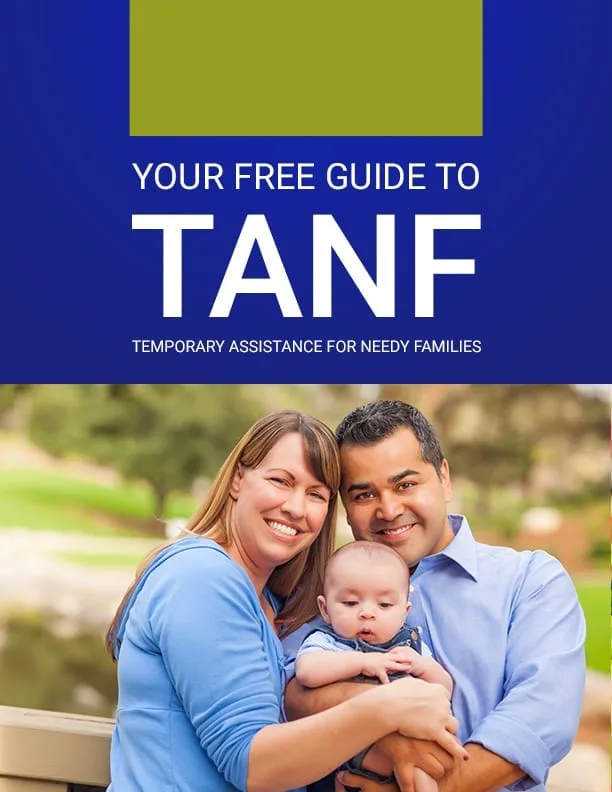Household Changes and Section 8: Understanding the Rules for Family Composition
Household Changes and Section 8: Understanding the Rules for Family Composition
We are privately owned and not affiliated with the government in any way or form.
When you’re receiving housing assistance through the Section 8 Housing Choice Voucher Program, keeping your information accurate and up to date isn’t just recommended—it’s required. Life happens. Families grow, relationships change, and people move in or out. But when these changes affect who lives in your household, it’s important to understand how that impacts your voucher and your responsibilities under the program.
This guide has helpful information on what to do when the household structure changes—whether that means a new baby, a relative moving in, a divorce, or someone moving out. We’ll break down the rules, explain how to stay in compliance, and help you learn ways to avoid any surprises that could risk keeping the voucher.
A Quick Refresher on Section 8 Rules
The Section 8 Housing Choice Voucher Program is designed to help qualified low-income families, individuals with disabilities, and seniors afford safe and decent housing. The amount of assistance you receive is based on a few key factors: your income, the number of people in your household, and the local housing market where you live.
The size and makeup of your household directly influence your voucher. It determines:
- The number of bedrooms you’re eligible for
- How your income is calculated
- The maximum amount the housing authority will pay toward your rent
Because of this, your local Public Housing Authority (PHA) requires you to report any changes to your household right away. Whether you’re adding someone, losing someone, or going through a major life event, your PHA must be informed. If they’re not—and they find out later—it can put your assistance at risk.
Adding a Family Member to Your Household

There are many reasons you might want or need to add someone to your household: a new baby, a spouse, an aging parent who needs care, or a child returning home. But under Section 8, you can’t just let someone move in without notifying your PHA and getting approval.
What To Do
If you plan to add someone to your household, you must formally request it through your housing authority. This typically involves filling out a form, submitting documentation (like a birth certificate, ID, or marriage license), and in some cases, undergoing a background check for the new household member.
PHAs have the right to approve or deny someone joining your household. For example, if the new person has a criminal history that violates PHA policy or would cause your unit to be overcrowded, they may deny the request.
How It Affects the Voucher
Adding someone can increase the total income of your household (especially in the case of a working spouse), which could reduce the amount of assistance you receive. On the other hand, if the addition means your family size has increased (like with a new baby or dependent relative), you might qualify for a larger unit.
Removing a Family Member from Your Household
Just like with additions, removing someone from your household needs to be reported. This might happen if a family member moves out, is incarcerated, passes away, or there’s a separation or divorce.
Why It Matters
PHAs use household size and income to determine the total amount of assistance. If someone leaves and their income was previously being counted, the subsidy amount might increase. Similarly, if a child leaves, you may no longer qualify for a unit of the same size. Failing to report these changes can result in overpayment of benefits, which you may be required to pay back later.
What to Do
Report the change as soon as it happens. Be prepared to provide documentation—like a lease termination letter, court order, or verification that the person is no longer residing with you.
If you’re dealing with a sensitive situation, such as domestic violence, there are special protections in place under the Violence Against Women Act (VAWA) that allow survivors to maintain their housing assistance. PHAs are required to accommodate victims of abuse and work with them to ensure housing stability.
Major Life Events That Impact Households
Life doesn’t always happen in neat, predictable ways. Here are some common life events that affect Section 8 households and how to handle them.
Birth or Adoption of a Child
If you give birth or adopt a child, the new addition must be reported. While newborns don’t earn income, adding a dependent to your household can affect the size of the unit you qualify for. In some cases, you may be eligible to move to a larger apartment or request a unit transfer through your housing authority.
The process typically requires submitting a birth certificate or hospital discharge paperwork. Notify your PHA as soon as possible, even if you don’t anticipate moving right away.
Taking in a Relative
Sometimes family situations change, and you may need to care for a parent, grandchild, sibling, or other relative. Whether it’s temporary or permanent, your PHA must approve the new household member before they move in. You’ll need to explain the circumstances and provide documentation to support your request.
Be clear about whether the stay is short-term or long-term—some PHAs allow temporary guests for a limited period, but longer stays usually require formal approval and may impact your voucher.
Marriage or Divorce
If you get married, your new spouse must be reported and screened by the PHA. Their income will be included in your household’s income calculation, which could increase your rent share. In some cases, if their income is too high, it may affect your eligibility for the program altogether.
If you’re getting divorced or separating, you’ll need to inform your PHA about who will remain in the home and who will be removed from the voucher. Legal documents like a divorce decree or separation agreement may be required to finalize the change.
Also, if children are involved and custody is split, make sure to clarify which parent has primary physical custody—that usually determines whose household the child is counted in.
How to Report Household Changes
Reporting changes might seem like a hassle, but doing it the right way helps protect your benefits. Here’s how to keep everything above board:
- Contact Your PHA Immediately
As soon as there’s a change, reach out to your housing caseworker. They’ll tell you what forms you need and what documents to gather. - Submit the Necessary Paperwork
Depending on the situation, you may need ID, Social Security cards, birth certificates, income documentation, or legal records (like a marriage certificate or custody order). - Be Honest and Accurate
Even if you’re unsure how a change might affect your assistance, it’s better to be upfront. PHAs will work with you—but they need accurate information. - Keep Records of Everything
Make copies of what you submit and note the dates you turned them in. If possible, get confirmation in writing or by email that your documents were received. - Follow Up
Processing changes can take time. If you don’t hear back in a reasonable amount of time, check in to make sure your request is moving forward.
Tips for Staying in Compliance and Protecting Your Voucher
Your Section 8 voucher is an incredibly valuable resource—and you want to protect it. Even small changes in your household, if left unreported, can lead to serious issues. If your PHA finds that you’ve been out of compliance, you could face repayment requirements, termination of assistance, or even legal action.
Here’s how to stay on the safe side:
- Always report changes within the required timeline (typically 10–30 days, depending on the PHA)
- Keep your annual recertification appointments and bring updated household info
- Ask questions if you’re unsure whether something counts as a “change”
- Don’t allow someone to move in without approval—even temporarily
Conclusion
Life changes all the time—and your household might, too. Whether you’re adding a child, getting married, caring for a relative, or experiencing a separation, it’s essential to keep your local housing authority in the loop.
By understanding how Section 8 rules apply to family composition, and taking the right steps to report changes, you’ll not only stay in compliance but protect the stability and support your voucher provides. With the right information and a little planning, you can keep your household—and your housing—secure.









